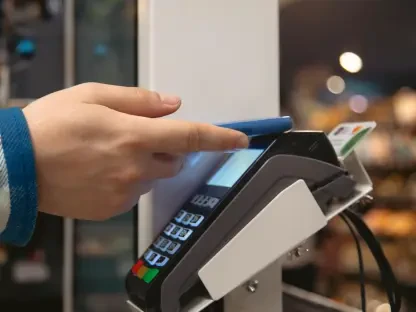In an era where digital transactions have become integral to the global economy, businesses are increasingly relying on payment processing solutions to ensure secure and efficient transactions. These solutions encompass a variety of technologies and services that enable businesses to accept payments from customers through multiple channels, including online, in-store, and mobile platforms. According to recent reports, the payment processing solution market is set for substantial growth, expanding from USD 79.9 billion in 2023 to an estimated USD 236.6 billion by 2033. This remarkable growth reflects an impressive compound annual growth rate (CAGR) of 11.5% from 2024 to 2033.
The expansion of the payment processing market is driven by several factors. Key among them is the rising demand for efficient, secure, and seamless payment systems, which has become paramount for businesses and consumers alike. This growing reliance is marked by the widespread adoption of advanced payment technologies and the increasing prevalence of e-commerce, which necessitate robust payment solutions. As digital and mobile platforms continue to evolve, businesses are offered greater flexibility, improved customer experiences, and enhanced security measures, contributing to the market’s robust growth trajectory.
The Rise of Advanced Payment Technologies
The demand for efficient, secure, and seamless payment systems is a significant driver behind the expansion of the payment processing solution market. Advanced payment technologies, such as mobile payments, contactless cards, and blockchain solutions, are poised to propel this market forward by offering enhanced convenience, speed, and security. Mobile payment solutions like Apple Pay, Google Pay, and Samsung Pay enable customers to use their mobile devices for payments, making transactions quicker and more convenient. Amid global health concerns, the adoption of contactless payments has surged, with consumers now preferring to tap their cards or smartphones to minimize physical contact, thereby speeding up payment processes.
Blockchain technology is also making significant strides in the payment processing industry by offering benefits such as transparency, enhanced security, and reduced reliance on intermediaries, which ultimately lowers transaction costs. Another emerging trend is the integration of artificial intelligence (AI) into payment solutions. AI technology is enhancing fraud detection capabilities, personalizing customer experiences, and streamlining payment processes, which not only increases efficiency but also builds customer trust. These advancements are expected to further drive the worldwide adoption of payment processing systems, as businesses and consumers seek more reliable and innovative payment solutions.
Regional Dominance and Market Leadership
In 2023, North America held a dominant position in the payment processing solution market, securing over 43.2% of the total market share and translating into revenue of USD 34.5 billion. This regional dominance can be attributed to several factors, including a robust e-commerce sector, favorable regulatory environments, and substantial innovations in the fintech space. As both large corporations and small businesses across North America continue to embrace advanced payment processing solutions, the region is set to retain its market leadership in the years to come.
Data from Clearly Payments highlights the extensive transaction volume in the U.S. market, which surpassed $10 trillion in 2023. This figure covers various payment methods, including credit and debit card transactions and Automated Clearing House (ACH) payments. Within this market, digital and e-commerce transactions accounted for an estimated $2 trillion in 2023, driven by consumers’ increasing preference for online shopping and mobile payments. As we look ahead to 2025, global transaction volumes facilitated by Payment Facilitators (PayFacs) such as Square, Stripe, and Shopify Payments are projected to exceed $4 trillion, with the U.S. continuing to play a pivotal role in this expansion.
The Evolution of Payment Processing Solutions
Various types of payment processing solutions have emerged to cater to the diverse needs of businesses and consumers alike. Traditional payment processors, including companies like First Data and PayPal, facilitate credit and debit card transactions, delivering robust security features, compliance with PCI standards, and support for a broad range of payment methods. These conventional processors are now integrating advanced security measures to better protect consumer data and ensure seamless transaction experiences.
Mobile payment solutions, exemplified by platforms such as Apple Pay, Google Pay, and Samsung Pay, have revolutionized the way consumers make payments by enhancing convenience and speed. Additionally, bank payment solutions like GoCardless focus on direct bank payments, offering lower transaction fees and faster processing times compared to card payments. This approach is particularly beneficial for businesses with recurring billing needs, streamlining their payment processes and reducing operational costs.
Integrated payment solutions from firms such as Stripe and Adyen provide comprehensive platforms that merge payment processing with e-commerce systems, supporting multiple currencies and payment methods for global businesses. Tailored payment processing solutions are also available for specific industries, such as cannabis retail, which necessitate compliance with stringent regulations. These specialized solutions include options like cashless ATM services and digital wallets designed to meet industry-specific requirements while ensuring regulatory compliance.
Significant Trends Shaping the Industry
Digital wallets have seen a substantial rise in popularity due to their capability to offer a seamless and convenient payment experience. By 2025, digital wallets are expected to become the preferred payment method for millions of users worldwide, enabling quick and secure transactions without the need for physical cards. This shift towards digital wallets underscores the growing consumer demand for efficient and easily accessible payment solutions that facilitate everyday transactions.
The integration of artificial intelligence (AI) into payment systems is another significant trend reshaping the industry. AI technology is enhancing fraud detection mechanisms, personalizing customer experiences, and streamlining payment processes by automating various tasks. By leveraging AI, businesses can provide more secure, efficient, and personalized payment services, thereby elevating customer satisfaction and loyalty. Additionally, blockchain technology is making its way into the payment processing landscape, offering benefits such as improved transparency, security, and reduced reliance on intermediaries, which lowers transaction costs and enhances efficiency.
The adoption of contactless payments has experienced a remarkable surge, driven by global health concerns and the need for safe and hygienic payment methods. Consumers now favor tapping their cards or smartphones to make payments, minimizing physical contact and reducing transaction times. This trend has prompted businesses to upgrade their point-of-sale systems to accommodate contactless payment options, ensuring they can meet the evolving preferences and expectations of their customers.
Opportunities in the Global Market
In today’s age, digital transactions are crucial to the worldwide economy, prompting businesses to increasingly depend on payment processing solutions for secure and efficient transactions. These solutions include various technologies and services that allow businesses to accept payments from customers via multiple channels, such as online, in-store, and mobile platforms. Projected growth in this market is remarkable, with an increase from USD 79.9 billion in 2023 to an estimated USD 236.6 billion by 2033. This growth showcases an impressive compound annual growth rate (CAGR) of 11.5% from 2024 to 2033.
Several factors drive this market expansion. A key element is the rising demand for efficient, secure, and seamless payment systems, a priority for both businesses and consumers. Additionally, the proliferation of advanced payment technologies and the surge in e-commerce necessitate robust payment solutions. As digital and mobile platforms progress, businesses gain greater flexibility, enhanced customer experiences, and better security. These improvements significantly contribute to the steadfast growth of the payment processing market.









